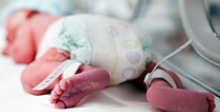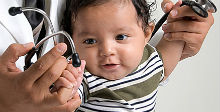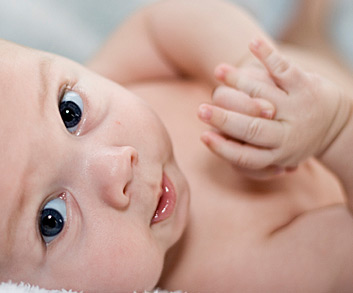Internal mini form
Contact Us Today
A risk factor does not ensure a child will develop Cerebral Palsy; it means chances are higher than if that risk factor was not present. Likewise, the absence of risk factors does not ensure that a child will not develop Cerebral Palsy.
What is a risk factor?
Cerebral Palsy risk factors are events, substances or circumstances that increase the chances of a child developing Cerebral Palsy. Events that create a greater risk for a child to develop Cerebral Palsy include accidents, traumatic brain injury, medical malpractice, and shaken-baby syndrome. Events could also include infections, complicated birth, maternal seizures, inflammation and improperly managed chronic health conditions. Risks can be avoidable, or unavoidable.
A mother’s intake of or exposure to toxins from cigarette smoke, illegal drugs, pesticides, hair dye, and even the use of some prescription medications during pregnancy can increase the likelihood that a child conceived later will develop Cerebral Palsy. An expectant mother’s exposure to illnesses such as Rubella or the chicken pox virus also place the fetus at risk for developing Cerebral Palsy.
Parental health and habits are known contributing risk factors. For example, parents younger than 18 or older than 34 are more likely to have a child with Cerebral Palsy. Mothers with eating disorders that aren’t managed properly during pregnancy can contribute risk.
A risk factor does not ensure a child will develop Cerebral Palsy; it means chances are higher than if that risk factor was not present. Likewise, the absence of risk factors does not ensure that a child will not develop Cerebral Palsy.
Cerebral Palsy risk factors are often confused with signs, symptoms or causes of Cerebral Palsy; they are different. To clarify, risk factors increase the odds of Cerebral Palsy occurring. They affect the causal pathway that leads to brain injury or brain malformation. Symptoms, on the other hand, are the experiences of the individual, which may indicate a condition exists, and signs are clinical proof of the condition. The cause of Cerebral Palsy is one of four types of brain damage:
- Periventricular Leukomalacia, or PVL – damage to white matter tissue in the brain
- Cerebral Dysgenesis – brain malformation or abnormal brain development
- Intracranial Hemorrhage, or IVH – brain hemorrhage
- Hypoxic-Ischemic Encephalopathy, or HIE, also referred to as Intrapartum Asphyxia – lack of oxygen to the brain or asphyxia
Although risk factors increase chances of a child developing Cerebral Palsy, the likelihood is still low. Approximately two to four in every 1,000 infants develop Cerebral Palsy in the United States. Even when risk factors are present, the probability of a child developing Cerebral Palsy is low.
What is a Risk Factor Causal Pathway?
Recent research suggests that a combination of risk factors — possibly occurring at just the right time in just the right order — may create a significant correlation toward the development of Cerebral Palsy. This concept is called a “causal pathway.”
No single casual pathway is known to result in Cerebral Palsy. Instead, it is thought that certain risk factors magnify or lead to other risks. Doctors and researchers are working to understand how each risk factor affects others.
A possible, hypothetical example of a causal pathway might occur like this: A mother may be exposed to a certain toxin, which causes slight mutations in some of the genes thought to influence Cerebral Palsy. This does not cause Cerebral Palsy, but later, the genetic mutation makes the growing fetus vulnerable to other risk factors. If infection sets in later in development, the body’s response is inflammation and production of cytokines.
These are thought to decrease a fetal tolerance to oxygen deprivation. During delivery, the fetus presents with a prolapsed cord that momentarily causes asphyxiation. The exposure to environmental risk factors, and asphyxiation can, together or separately, lead to brain injury or malformation that results in Cerebral Palsy. This is an example of a causal pathway to Cerebral Palsy.
Another example of causal pathways is when a mother who has had troubled pregnancies, and in fact had one live stillbirth, may consult a fertility expert for assistance in getting pregnant. The doctor prescribes infertility treatments that lead to multiple pregnancies. The babies are born with low birth weight and premature. In this example, prior complicated pregnancy, infertility, multiple births, low birth weight and premature birth are all risk factors that individually, or together, pose an increased risk of the child developing Cerebral Palsy.
Most babies are born healthy and remain healthy despite the presence of many risk factors. The goal is to eliminate or reduce exposure to risk factors whenever possible.
Couples considering pregnancy are urged to see their appropriate health care providers for pre-conception counseling. If the couple is without the luxury of pre-planning their pregnancy, the mother is urged to seek an appointment with the OB/GYN as soon as pregnancy is suspected. An OB/GYN will assess risks, obtain the mother and the father’s medical history, start the mother on an appropriate prenatal care regimen, and monitor the pregnancy to provide the baby with the best possible outcome. During pregnancy it is very important to inform the OB/GYN of any and all exposure to risk factors.
Were you or your child at risk – before, during or after your child’s birth?
Cerebral Palsy risk factors are events, substances or circumstances that increase the chances of a child developing Cerebral Palsy. They can be avoidable, or unavoidable. A risk factor does not ensure a child will develop Cerebral Palsy; it means chances are higher than if that risk factor was not present. Likewise, the absence of risk factors does not ensure that a child will not develop Cerebral Palsy. Have you been exposed to the following risk factors?
- Cerebral Palsy Risk Factors
Types of risk factors:
- Asphyxia and oxygen deprivation
- Blood type incompatibility or jaundice
- Complications of birth
- Infection
- Intrauterine growth restrictions
- Multiple births and infertility drugs
- Parental health and habits
- Placenta complications
- Premature birth
- Traumatic brain damage
Risk factors vs. risk factor causal pathways
A risk factor does not ensure a child will develop Cerebral Palsy; it means chances are higher than if that risk factor was not present. Likewise, the absence of risk factors does not ensure that a child will not develop Cerebral Palsy.
- Risk Factors and Risk Factor Causal Pathways
The Cerebral Palsy Risk Factor Checklist
Any exposure to risk factors prior to conception and during pregnancy should be immediately discussed with a doctor in order to treat and minimize risk. The Cerebral Palsy Risk Factor Checklist helps parents determine if they may have been exposed to risk factors for Cerebral Palsy.
- The Cerebral Palsy Risk Factor Checklist









